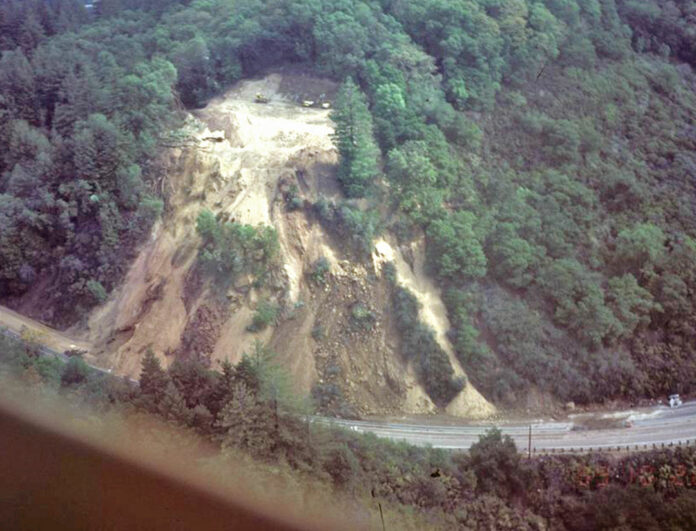For old-timers and relative newcomers alike, it’s helpful to remember just how bad traffic can be after a natural disaster.
Shortly after 5 p.m., on Tuesday, Oct. 17, 1989, a 6.9-magnitude earthquake shook the San Andreas Fault, 10 miles northeast of Santa Cruz. During the next 8–15 seconds, TVs went black for those watching the third game of the World Series between the Giants and A’s at Candlestick Park. Beachgoers enjoying the unusually warm fall day ran for cover. Nerves jangled.
Building collapsed in Santa Cruz, Capitola and Watsonville. Seventy miles away, a segment of the Bay Bridge collapsed, and homes in San Francisco’s Marina District pancaked.
And many of Santa Cruz County’s roads buckled under the intense pressure.
Four major landslides and pavement damage closed Highway 17 completely, a bridge on Highway 1 over Harkins Slough collapsed, three bridges on major local arteries suffered structural damage and were shut down, many rural roads, including alternate routes over the hill, were no longer passable.
With about 59,000 daily commuters traveling to Silicon Valley (that number had risen to 69,000 in 2015), restoring Highway 17 was deemed a priority.
In the days following the earthquake, local officials pressured Caltrans to open Highway 17 on a limited access. Six days after the earthquake Highway 17 was opened to carpools of three or more. Convoys of about 100 cars were led over the hill by CHP officers.
Traffic was directed one lane in either direction, with a speed limit of 35 miles per hour. Heavy trucks were allowed only between 8 p.m. and 5 a.m. Buses, mountain residents with a pass, emergency vehicles and construction workers were allowed at any time.
The first week was chaos. CHP enforcement was inconsistent, the number of drivers with a mountain resident pass seemed to multiply a hundred fold. Road repairs were hampered by the volume of traffic, and alternative routes were jammed.
The 40-minute commute often turned into a four-hour nightmare.
After a week of insanity, local and state officials reduced the carpool requirement to two people, but only from 5 a.m. to 9 a.m. and 3 p.m. to 7 p.m., while other restrictions remained in place.
Highway 17 was restored to normal operations a month after the earthquake. The Highway 17 Express, which began as a direct result of the quake, still operates.
Carpooling, a necessity in the weeks after Oct. 17, quickly sank in popularity. An informal survey by the Santa Cruz County Regional Transportation Commission revealed that 43 percent of the respondents stopped ridesharing over Highway 17 after it reopened.











